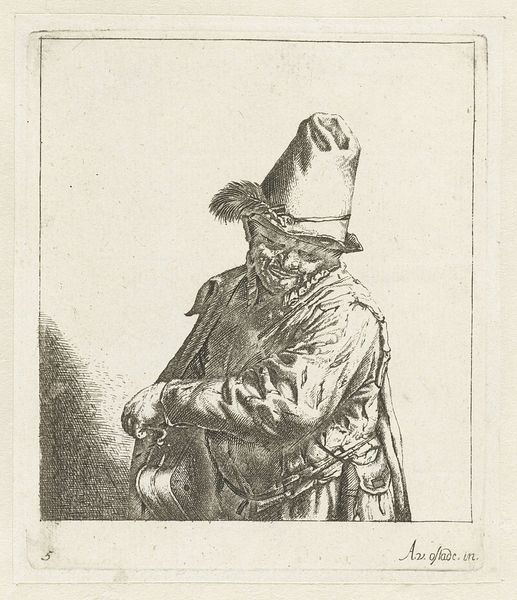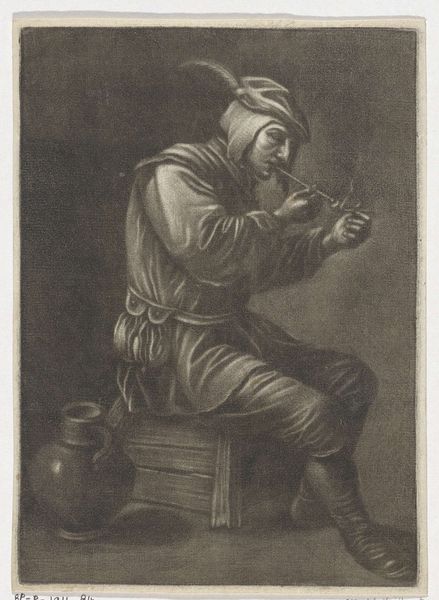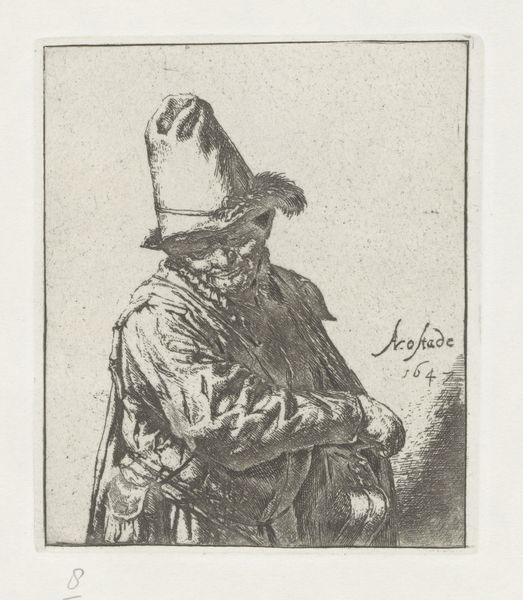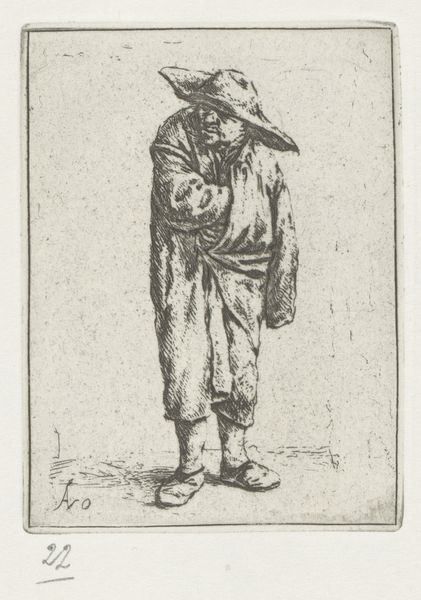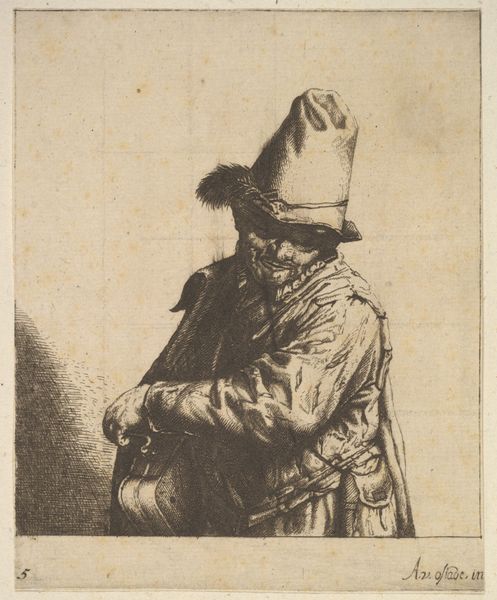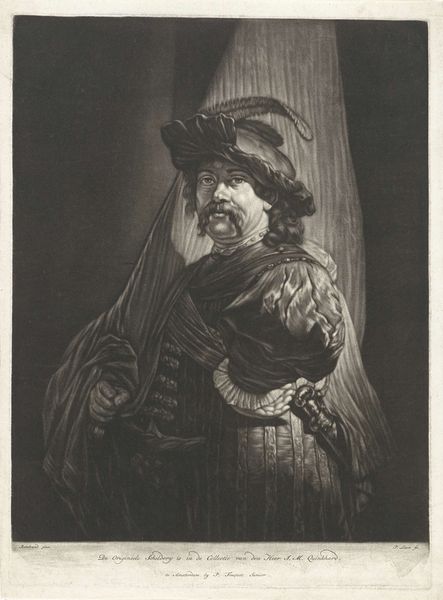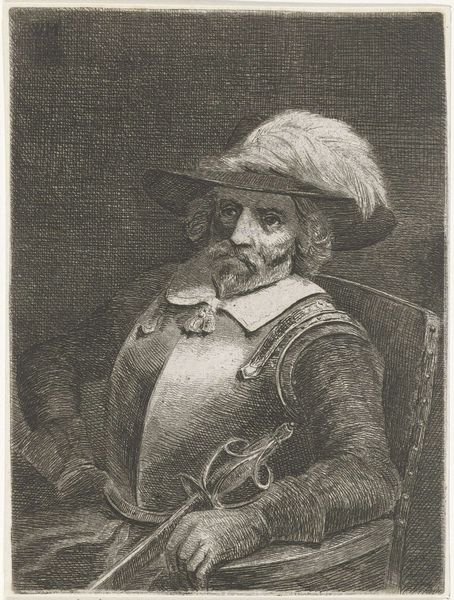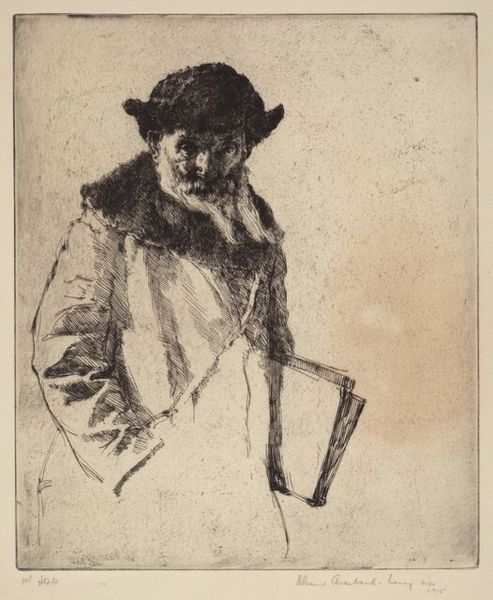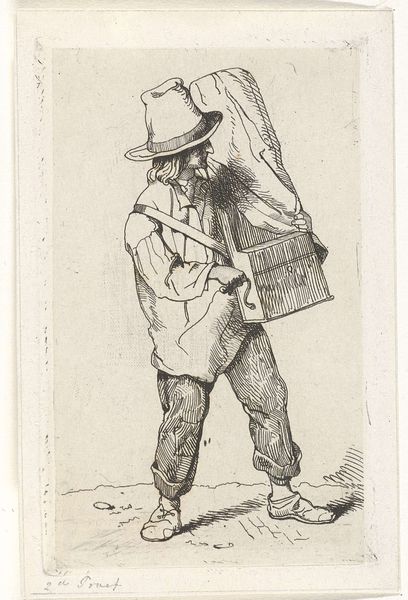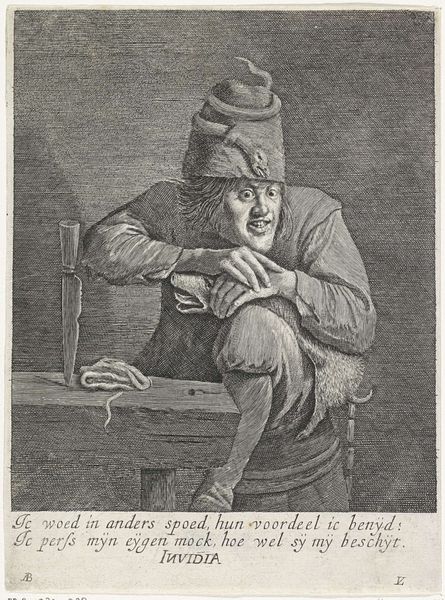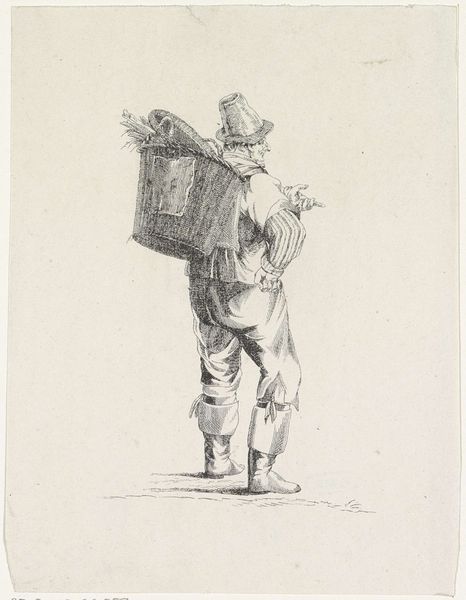
#
facial expression drawing
#
pencil sketch
#
caricature
#
charcoal drawing
#
charcoal art
#
portrait reference
#
pencil drawing
#
limited contrast and shading
#
animal drawing portrait
#
portrait drawing
Dimensions: height 123 mm, width 93 mm
Copyright: Rijks Museum: Open Domain
Curator: Let's turn our attention to this intriguing drawing, "Man with Hat and Hurdy-Gurdy," from somewhere between 1650 and 1800. The piece resides here at the Rijksmuseum, its artist currently unknown. Editor: My first impression is one of subdued melancholy. The stark contrast of the charcoal really pulls the figure out of the darkness, but there's a weightiness to his posture. Curator: Indeed. Notice the artist’s adept handling of line and shadow. The varying pressure applied to the charcoal creates a striking contrast that defines form and texture, particularly in the rendering of the man's clothing. Semiotically, that hat—a rather outlandish confection—suggests a performance, a role assumed. Editor: Right, it speaks volumes about the man's position in society. Street musicians of this period were often marginalized figures, their livelihood dependent on the whims of passersby. The exaggerated features almost border on caricature, which highlights the way the elite might have viewed these entertainers. Curator: The structural arrangement further reinforces this reading. The figure is placed squarely in the center, framed by what appears to be a window or balcony. It is this frame that locks him within the picture plane and is set in tension against the darkness around him. This is contrasted with a soft diffusion of tonal gradations elsewhere. Editor: It makes me think about the act of observation. Are we, as viewers, complicit in the power dynamic, watching this man perform for our amusement? How much agency does he really have? This drawing offers a powerful social commentary, inviting us to reflect on the lives of those who lived on the fringes of society. Curator: A compelling point. By dissecting the formal elements—the strategic use of chiaroscuro, the placement of the figure—we expose underlying social meanings inherent within the piece, echoing sociopolitical realities of its time. Editor: Absolutely, analyzing both form and the social milieu unlocks the artwork's complete narrative. I think seeing artwork displayed today continues this rich history. Curator: It certainly offers food for thought, even centuries later.
Comments
No comments
Be the first to comment and join the conversation on the ultimate creative platform.
